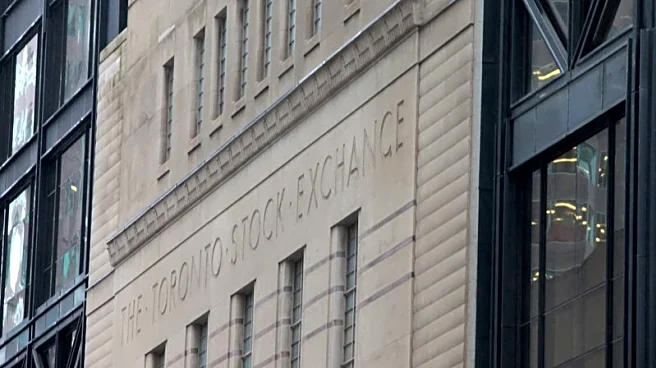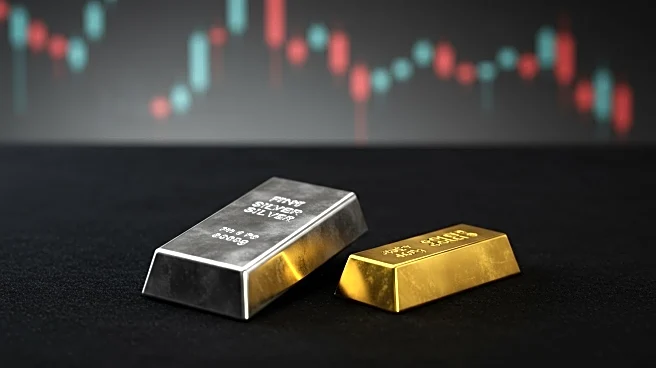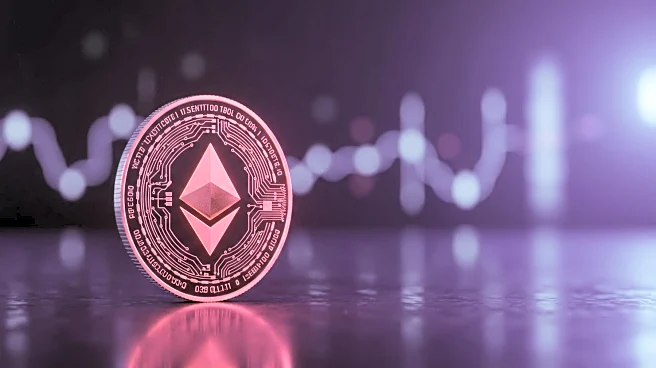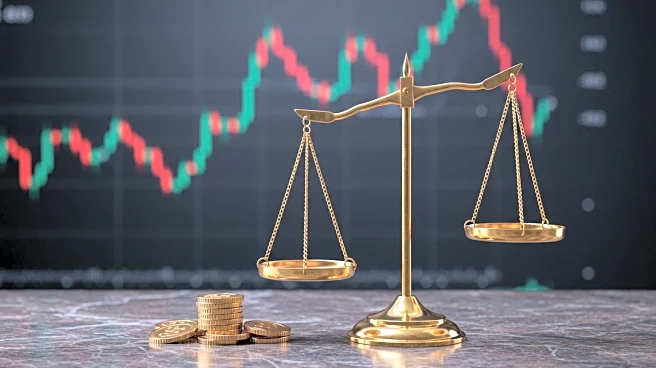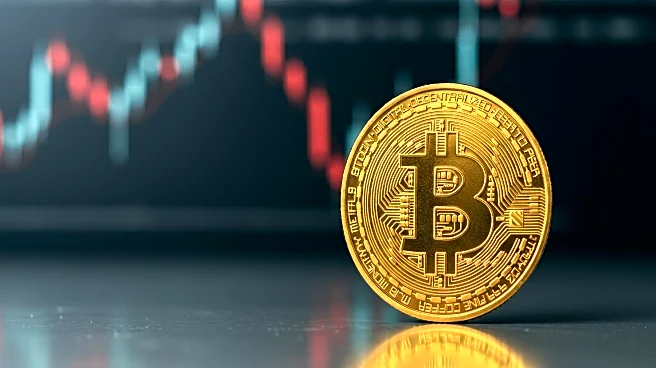What's Happening?
Gold prices have shown resilience, trading near recent peaks as of August 25, 2025, with spot gold at $3,372.67 per ounce. The market is closely watching the Federal Reserve's monetary policy, which is expected to shift towards a more accommodative stance. According to the CME FedWatch tool, there is an 86% probability of a rate cut in September, reflecting widespread anticipation of supportive policy measures. This expectation is bolstering gold prices, as lower interest rates reduce the opportunity cost of holding non-yielding assets. However, the strength of the U.S. dollar is creating headwinds for gold, as it makes the metal more expensive for international buyers, thus constraining demand.
Why It's Important?
The Federal Reserve's potential rate cut is significant for various stakeholders, particularly investors in the gold market. Lower interest rates typically enhance the appeal of gold as an investment, given its role as an inflation hedge and a non-yielding asset. The anticipation of a dovish monetary policy could lead to increased investment in gold, potentially driving prices higher. However, the strong dollar poses a challenge, as it affects international demand for gold. The upcoming Personal Consumption Expenditures (PCE) data release will be crucial, as it could influence the Federal Reserve's policy decisions and impact gold market volatility.
What's Next?
Investors are awaiting the PCE data release, which is the Federal Reserve's preferred inflation gauge. This report will provide insights into the central bank's policy deliberations and could either reinforce current rate cut expectations or prompt a reassessment. The outcome of this data release is likely to trigger significant volatility in the gold market, as it will directly affect the probability and timing of policy adjustments. The interplay between monetary policy expectations and currency movements will continue to shape the investment landscape for gold.
Beyond the Headlines
The dynamics of the gold market are influenced not only by monetary policy but also by global supply factors. While financial market sentiment currently drives price movements, ongoing mining operations worldwide, such as those in Krasnoyarsk, Russia, remind investors of the supply-side influences. The nuanced investment landscape requires careful analysis of both policy expectations and currency volatility, presenting opportunities and challenges for gold investors.





